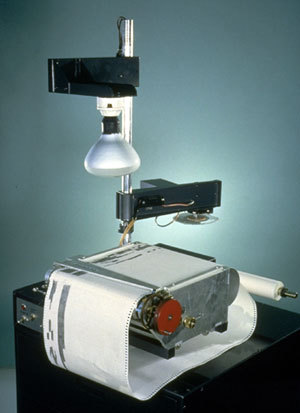Text
Musink supports semi-structured, delayed interpretation and serves as a customizable gesture browser, giving composers significant freedom to create their own, individualized composition languages and to experiment with music, on-paper and on-line.
0 notes
Text
#carolee schneeman#performance drawing#up to and including her limits#tree surgeon#harness#crayons#durational#performance#feminist#abstract
0 notes
Text
youtube
Yantras
"the purpose behind we creating and worshipping a divine entity is so that that entity reflects that action back on our own self. Thereby, raising us to a higher level of living, ascribed with that deity. This is the idea behind worshipping Saraswati, the goddess of knowledge, to make us cleverer. Or worshipping Laksmhi, the goddess of wealth, to make us wealthier. These deities, which we create are not just mere figments of our imagination, we breathe life into them every time we meditate upon and worship them. There are many ways of creating such divine entities and energising them, so that they magnify and reflect that energy back into us. One of the direct forms of doing this, is through reciting the sound - mantra - and realising the form - yantra - of the corresponding energy."
There are 4 basic aspects to understanding a yantra:
the symbols used to create it ((geometric shapes with physiological effects on the human mind)) ((dots - the source. Circle - infinite space and expansiveness, space element. Square - fixed space and rigidity/associated with earth element. Upward triangle - masculinity, fire element. Downward triangle - feminine energy, water element. Comination of fire rising upward and water flowing downward creates a 6-point star and represents balance and equilibrium. clockwise = creation, anticlockwise = death. Two squares, forming an octagon = fire OR preservation. Lotus petals are not strictly part of the geometric form, but represent a consequence of the energy in it. Seen as the family of the energy at source. ))
the surface on which it is created ((earth, stone, copper, silver gold, alloys. The surface should be flat and conducive to hold the yantra without disturbance for at least as long as it will be used. More conductive surfaces like metal are more effective than plastic))
the ingredients which are used to make it ((ground rice (white) and other natural pigments. Flowers or gemstones can be arranged in the shapes. Lines can be engraved.))
the process of energising and benefitting from it ((offering food sources of corresponding energy sources to the deity. Or visualising the yantra and internalising and meditating on the form))
"A Yantra, form, is representation of Mantra, sound. Deity is an embodiment of there yantra. Yantra is to the deity as the body is to the being. As oil is to a lamp. Similarly, All deities have their corresponding mantras ascribed to them."
#yantra#YouTube research#Sanskrit channel#Mantra#Worship#drawing and sound#Spiritual journeying through visuals#Youtube
0 notes
Text
youtube
Sun Xun is one of China’s most talented and ambitious young artists. He experiments with drawings, traditional ink paintings and woodcuts, and then uses new technologies to transform them into his artistic trademark – black and white animations. Born in 1980 in Fuxin, his works often explore and question what is known about Chinese history. In 2006 he founded his own animation studio called Pi and produces large amounts of work each year. In just under 10 years, Sun Xun has held over 30 solo exhibitions, most notably at the Hayward Gallery in London, and at the Hammer Museum in Los Angeles. He has also shown his films at more than 150 film festivals worldwide, including the 8th Seoul International Film Festival and the 25th Torino Film Festival.
1 note
·
View note
Text
youtube
youtube
#Caroline Devernaud#Youtube interview#Show promotion#Fugue#Embodied painting#drawing and movement#Youtube
0 notes
Text
Spectrogram (1959), Hugh le Caine
The Spectrogram, shown here as it was in 1966, was used to control the output of the Sine bank, or the Multi-track (Special Purpose) Tape Recorder. The chart paper moved past a series of light sensitive switches and was illuminated by the light above the instrument. When the light was blocked by a darkened area of the paper, the sound generator would be turned on.

#Spectogram#Hugh le Caine#Oramics predecessor#early electronic music#visual synthesisers#music from light receptors
0 notes
Text
youtube
0 notes
Text
"Scriabin developed his clavier à lumières (keyboard with lights), also called in the score tastiéra per luce, where both colors (red, blue, etc.) and effects (lightning, sparkles) were controlled off from a keyboard. One copy of this instrument was developed for the première in New York in 1915, created by Scriabin’s friend Alexander Mozart, an electrical engineer. It was very primitive and has largely been abandoned in performances of the work. "
0 notes
